Page 1 of 3
"La malle" - the trunk.
The most ancient piece of furniture ? The word "malle" ("trunk", in french) dates from the 9th century, from High German, Malha or Malaha, and means bag. The trunk is the oldest and one of the few pieces of furniture from the Middle Ages. At the time, it served as a chair, a table, a trunk...
The trunks have existed ever since people started travelling. However, their production has accelerated during the development of rail transport in the 1870s. That's why you're more likely to find trunks that date back to that period or after.
There are 2 kinds of "shapes" :
the "bins" Flattop, built by carpenters small ax:
- the "huches"(in french), that are chests with a flat lid
- the "bahuts"(in french), that are trunks with a domed lid.
The manufacturing increased into the 30-40's, and it is only after war that the trunks more or less disappeared. The latest "trunkmakers" that exist are: Vuitton, Goyard, Ephtee and the trunk Bernard.
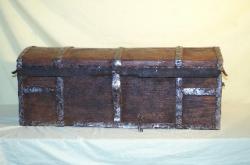
beginning of XIXth century, Moraillon
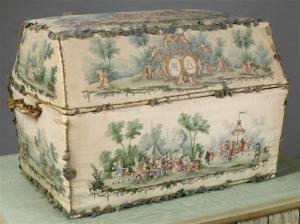
Layette trunk made for the birth of Louis the XIVth, 1638.
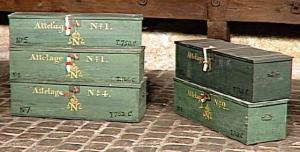
Wooden trunks marked trianon, containing carriages ornaments, trimmings harness and bridle cockades.
"La valise" - the suitcase
The word " valise" ( suitcase in french) has been used since the sixteenth century, but we do not know its origin for sure. It may be derived from the Italian valigia, which would refer to a bag, or a word that would mean "protect", since the bag is protecting its content.
"Layetier-emballeur" - packer
Craft Packer goes back to around 1521. Under François 1er, mention is made of the statutes governing the profession. The word appears Layetier in 1582 and originates from Laie is a small safe where preserved jewelry, valuable documents ... In the 19th, the 2 words layetier and packer are associated to describe a profession Packer takes rating of all objects to be transported (at the time, a diligence that moves so you have to protect everything that is moved) and creates a custom box. Unlike traditional cabinetry, packager does not use assembly but together with nails, possibly metal blades, small strips and sometimes a hinge and a lock.
We choose to pack fat dry cloth or canvas.
Oily cloth is impregnated with bituminous substances, heated straw and stretched heavily on the body, then runs dry cloth. This preserves both moisture, weathering and tears.
Sources: Louis Vuitton A French Saga Stephanie Bonvicini Fayard
Packing as a profession goes back to around 1521. Under François 1er, mention is made of the statutes governing the craft. The word "layetier" appears in 1582 in french, and comes from "Laie" : a small safe where jewelry or valuable documents are preserved. During the 19th century, the 2 words layetier and emballeur ("packer" in french) are associated to describe a profession.
The packer makes measurements for all kinds of objects to be transported (at the time, a diligence moves a lot, so you have to protect everything that is taken) and creates a custom box. Unlike traditional cabinetry, packers do not use assembly techniques, but rather unites parts with nails, possibly metal blades, small strips and sometimes a hinge and a lock.
People ususally chose to pack belongings in oilcloth or canvas. Oilcloth is soaked with bituminous substances, heated on straw and heavily stretched on the body of the trunk, then runs dry cloth. This preserves from moisture, weathering and tears.
Sources: Louis Vuitton A French Saga Stephanie Bonvicini Fayard
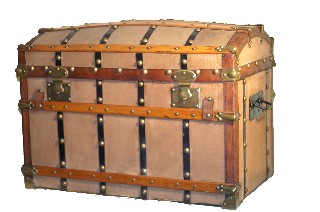
Sturm Trunk ( Strasbourg ) 1850
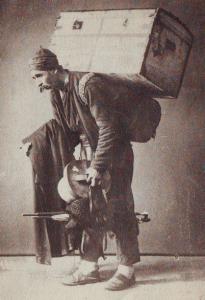
Porter
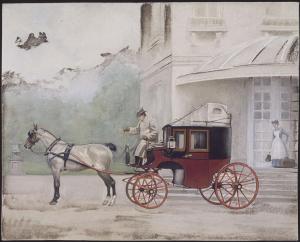
museum of Compiegne







